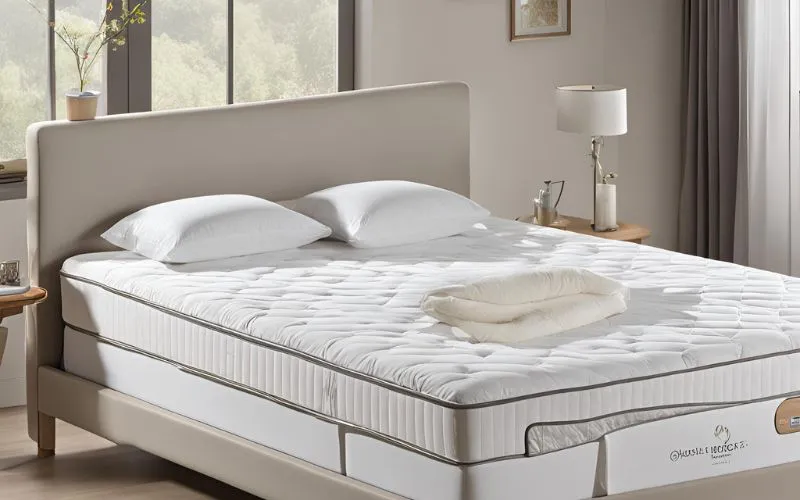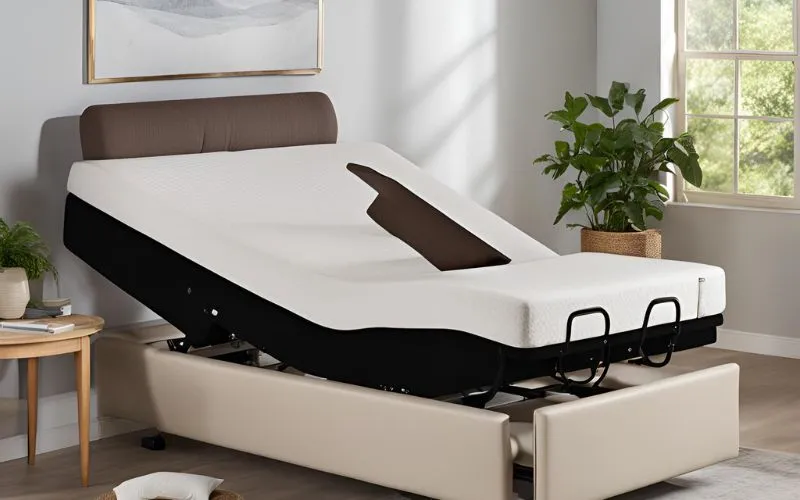Effective and Easy Sleeping Positions for Hip Pain Healing

Introduction
Welcome to our comprehensive guide on sleeping positions for hip pain healing. If you suffer from hip pain, you know how challenging it can be to find a comfortable sleeping position. In this article, we will explore the impact of sleeping positions on hip pain, the best sleeping positions for healing, and tips for improving sleep quality while dealing with hip pain. Let’s dive in and discover how you can get a good night’s sleep despite hip discomfort.
Understanding Hip Pain
Hip pain can be a debilitating and frustrating condition that can significantly impact daily activities, including sleep. The discomfort can manifest in various ways, such as:
• Arthritis: Osteoarthritis, rheumatoid arthritis, and other forms of arthritis can cause hip pain, stiffness, and limited mobility.
• Injuries: Trauma to the hip joint, such as a fall or sports injury, can lead to hip pain, swelling, and limited range of motion.
• Bursitis: Inflammation of the fluid-filled sacs (bursae) surrounding the hip joint can cause pain, stiffness, and swelling.
• Sciatica: Compression or irritation of the sciatic nerve can cause pain, numbness, tingling, and weakness in the hip, thigh, and leg.
Understanding the root cause of hip pain is crucial in addressing it effectively. A comprehensive evaluation by a healthcare professional can help identify the underlying cause of the pain and develop an appropriate treatment plan. This may include:
• Medical imaging tests: X-rays, MRI scans, or CT scans to rule out other conditions that may be contributing to the pain.
• Physical examination: A thorough physical examination to assess range of motion, strength, and sensation in the hip joint.
• Medical history: A detailed review of medical history to identify potential triggers or underlying conditions that may be contributing to the pain.
Once the cause of hip pain is determined, a personalized treatment plan can be developed to address the underlying condition. This may include:
• Medications: Over-the-counter pain relievers, anti-inflammatory medications, or muscle relaxants to alleviate symptoms.
• Physical therapy: Exercises and stretches to improve range of motion, strength, and flexibility in the hip joint.
• Alternative therapies: Chiropractic care, acupuncture, or massage therapy to promote relaxation and reduce pain.
• Lifestyle changes: Modifications to daily activities, such as avoiding heavy lifting or bending, and taking regular breaks to rest and stretch.
In addition to medical treatment, making adjustments to your sleep environment can also help alleviate hip pain. Consider the following:
• Sleeping position: Experiment with different sleeping positions to find one that reduces pressure on the hip joint. Some people find that sleeping on their side with a pillow between their knees or using a body pillow can help alleviate hip pain.
• Mattress support: Choose a mattress that provides adequate support for the hips and lower back. A medium-firm mattress may be beneficial for people with hip pain.
• Pillows: Use pillows that support the natural curve of the spine and keep the hips and shoulders in alignment.
By understanding the root cause of hip pain and making informed lifestyle changes, you can reduce discomfort and improve overall well-being. Consult with a healthcare professional to determine the best course of treatment for your specific condition.
The Impact of Sleeping Positions on Hip Pain
Sleeping positions play a crucial role in managing hip pain and optimizing sleep quality. The position in which you sleep can have a profound impact on your hip pain. Incorrect sleeping positions can exacerbate discomfort and lead to disrupted sleep. Certain sleeping positions may put undue pressure on the hips, leading to increased pain and stiffness.
- Side Sleeping: Sleeping on your side with a pillow between your knees can help align your hips and reduce pressure.
- Back Sleeping: Sleeping on your back with a pillow under your knees can promote proper spinal alignment and alleviate hip pain.
- Stomach Sleeping: This position can strain the lower back and neck, leading to increased hip pain and discomfort.
Moreover, the type of mattress and the firmness level also significantly impact hip pain. A medium-firm mattress is often recommended for individuals with hip pain as it provides a balance of support and comfort. Additionally, investing in a supportive pillow can help maintain proper spinal alignment, thus reducing pressure on the hips.
In the next section, we will delve into the specific sleeping positions that can either contribute to or alleviate hip pain and explore the best sleeping positions for hip pain healing.
Best Sleeping Positions for Hip Pain Healing
When it comes to healing hip pain through proper sleeping positions, a few are particularly beneficial. The following sleeping positions can help relieve pressure on the hips and promote better sleep quality:
- Back Sleeping: Sleeping on your back with a pillow placed under your knees can help align the spine and reduce pressure on the hips.
- Side Sleeping: If you prefer to sleep on your side, place a pillow between your knees to maintain proper hip alignment and reduce strain.
- Fetal Position: Curling up on your side with your knees drawn toward your chest can alleviate hip pain for many individuals.
- Reclined Position: Using an adjustable bed or propping yourself up with pillows can relieve hip pressure while sleeping.
Tips for Improving Sleep with Hip Pain
Improving sleep quality while managing hip pain is crucial for overall well-being, as it can significantly impact daily life and overall health. Here are some helpful tips to enhance your comfort and rest while dealing with hip discomfort:
Invest in a supportive mattress and pillows
- Look for a mattress that provides the right level of support for your hips, especially if you have a pre-existing condition or injury. A medium-firm mattress is often recommended for people with hip pain.
- Use pillows designed to alleviate pressure on the hips, such as contoured pillows or pillows with built-in hip supports.
- Consider upgrading to a new mattress or pillows if your current ones are old or no longer providing adequate support.
Use heat or cold therapy
- Apply heat or cold packs to the affected area before bedtime to reduce inflammation and soothe hip pain. Heat therapy can help relax muscles and increase blood flow, while cold therapy can help reduce swelling and numb the pain.
- Experiment with different temperatures and durations to find what works best for you.
Engage in gentle stretching exercises
- Gentle stretching exercises can help maintain hip flexibility and reduce stiffness, making it easier to fall asleep and stay asleep.
- Focus on stretches that target the surrounding muscles, such as the glutes, hamstrings, and lower back.
- Consult with a physical therapist or healthcare professional to create a personalized stretching routine.
Consult a physical therapist
- A physical therapist can provide specific exercises tailored to address your hip pain and improve range of motion.
- They can also help you develop a customized stretching routine and provide guidance on proper body mechanics to reduce strain on your hips.
Practice relaxation techniques
- Deep breathing exercises, meditation, and progressive muscle relaxation can help calm your mind and body before sleep.
- Regular relaxation practice can also reduce stress and anxiety, which are common contributors to insomnia and poor sleep quality.
Explore sleep aids under professional guidance
- If you’re struggling to manage hip pain at night, consult with a healthcare professional about sleep aids that may be suitable for you.
- They can recommend over-the-counter options or prescribe medications that can help manage pain and improve sleep quality.
- Always follow the recommended dosage and usage guidelines for any sleep aids.
- Remember to prioritize your comfort and well-being by creating a sleep-conducive environment that addresses your hip pain. By implementing these tips, you can improve your sleep quality, reduce discomfort, and wake up feeling refreshed and ready to take on the day.
Conclusion
In conclusion, finding the right sleeping position is crucial for individuals dealing with hip pain. By understanding the impact of sleeping positions on hip discomfort and incorporating the best sleep practices, you can significantly improve your sleep quality and overall well-being. Remember to consult with a healthcare professional to explore suitable treatment options and customize a sleep routine that addresses your specific hip pain needs. With the right knowledge and adjustments, you can effectively manage hip pain and enjoy restful sleep.




